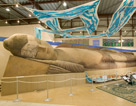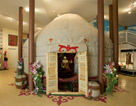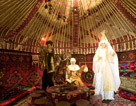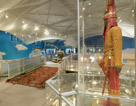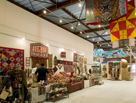Central Asia Pavilion

Official name
Central Asia Pavilion
Press release
Theme / Exhibition
The Central Asia Pavilion dynamically presents the cultural exchanges between East and West under the theme "Exchanges of Time."
The main exhibit is a replica of a reclining Buddha unearthed in 1966 during archaeological excavations of the Ajina-Tepa hill, the site of an ancient monastery on a Silk Road branch connecting Central Asia with India. This supine Buddha, known as "Buddha in Nirvana," is said to date back to the 6th century. After Afghanistan's Taliban destroyed the giant stone Buddhas of Bamiyan, it became the largest ancient Buddha statue in Central Asia. As a historical heritage and a symbol of cultural exchange and peace, it is an extremely important cultural asset. The replica was made with the assistance of Tajikistan's museum of national antiquities.
In the Uzbekistan corner, the country's traditional handicraft wood and brick carvings realistically decorate the facade, inside walls and symbolic exhibits of the pavilion.
The Kazakhstan corner introduces the country's magnificent nature and future-oriented technology by symbolically exhibiting trees, grassy plains and fountainheads.
In the Kyrgyzstan corner, the country's rich nature, culture and traditions are introduced through photo panels and video images, with the pavilion facade and inner walls portraying features of a yurt, the traditional Kyrgyz nomadic tent.
The Tajikistan corner features its rich mountains, animal life, culture and traditions accented by a symbolic gate.
In the joint space, a panorama map on the wall shows the exchanges that have taken place in Central Asia over the ages. A guide in the costume of the Marco Polo days takes you on a tour of fun that helps you learn the history of exchanges and cultures of the Central Asian countries.
